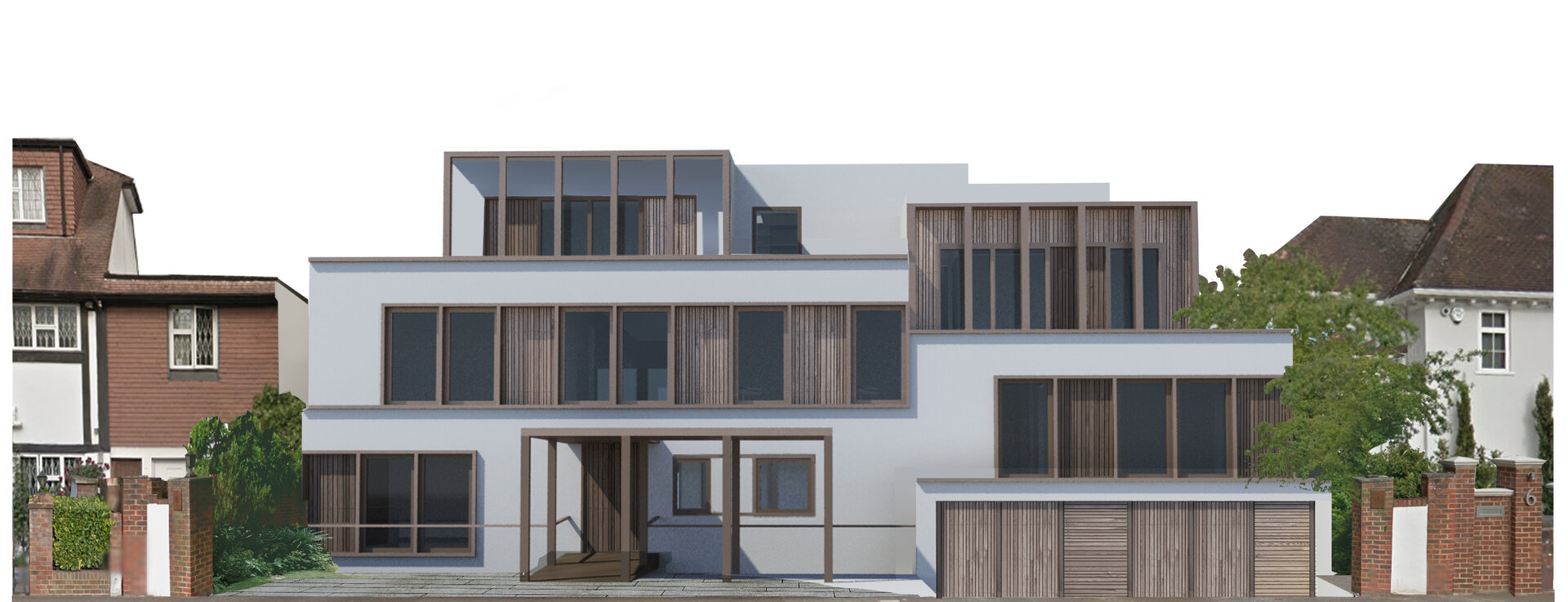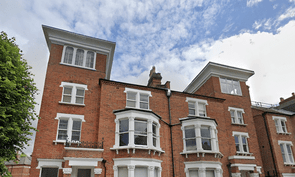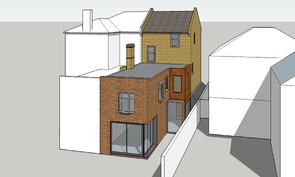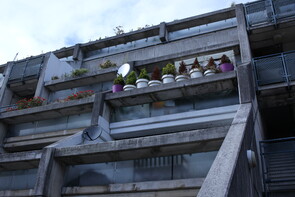Our Camden Planning Services
WEA Planning are Camden planning consultants offering advice on all levels of planning application from small-scale house conversions up to large commercial projects.
We can help you gain the planning permission you need, regardless of the type of proposal:
Confirmation that a development can be built using permitted development rights.
Prior notification - an express application scheme for smaller projects.
Development in Camden conservation areas or where you need listed building consent.
Change of use in Camden - for applications where no structural changes take place, but the building is used for a different purpose.
Residential extensions, basements or loft conversions in Camden.
Commercial developments, including new build and change of use.
Our experience working on planning projects in across London covers all the different stages of the planning process.
We can help you with:
Initial consultations and pre-application submissions.
Making a full planning application to the London Borough of Camden.
Applications to remove or vary a planning condition.
Negotiating Community Infrastructure Levy (CIL) contributions.
Obtaining Certificates of lawful use.
Planning appeals and public inquiries.
Making representations at Camden planning committee meetings. Most applications will not need to go this go through this process, but even a smaller planning application can be called before the committee if there are a sufficient number of unsatisfied objections.
With experience across many different sectors, WEA Planning can help with your scheme, whatever the nature and type of building proposal it is. We have worked on all of the following types of scheme across London:
Residential schemes, including securing planning permission for large garden outbuildings, extensions, home offices and conversions from offices to flats.
Commercial planning applications.
Educational buildings, health centres and similar such public sector planning applications.
Other usage types (sui generis). This planning application type covers any kind of building which does not already have its own usage class.
About the London Borough of Camden
In its southernmost reaches, the London Borough of Camden includes the northern tip of Theatreland in the West End, with Tottenham Court Road tube station being on the boundary with Westminster. To the east, the borough stretches as far as Farringdon station, and it most notably includes the British Museum, the British Library, two of London's most important railway stations in King's Cross and St Pancras, and also Euston station.
Most of the University College London campus in Fitzrovia is also within the London Borough of Camden.
Most of the borough sits to the north of Camden Town, where it spreads between Brent to the west, Barnet to the northwest, and Haringey to the northeast. This northern part of the borough is largely residential, including some of London's most desirable properties, especially around Highgate Village.
When it comes to green spaces, Camden contains some of the most famous park areas in London, from the eastern reaches of Regents Park through to Primrose Hill and the giant Hampstead Heath, both of which offer fantastic views of the city of London below.
Key Planning Issues in the London Borough of Camden
By far the most significant planning issue in Camden in recent years has been preparation for the development of the High Speed 2 (HS2) railway through the borough. Whilst this scheme has been hugely contentious at the national level, it has been causing particular disruption in the London Borough of Camden, due to the need to demolish a number of properties in Somerstown, in order to cater for a massively expanded Euston station.
Whilst HS2 will continue to provoke passionate debate long after it has opened, the scheme falls well outside the usual Camden planning process. This is because, as has been the case with previous major railway development plans, it has gained approval by Act of Parliament, rather than a direct planning application to Camden and the numerous other boroughs it passes through.
Outside locations immediately affected by HS2, Camden continues to experience the same development pressures which will be found in other inner London boroughs. Your Camden planning project will be required to comply with a number of local and national policies, and these include London-wide policies as well as those set by the borough of Camden.
Camden also has a large number of conservation areas, where specific local conditions will be applied, together with more than 5,000 listed buildings. WEA are planning consultants in Camden with detailed knowledge of planning schemes across West London. We will do everything we can to ensure that your scheme gains planning approval from the London Borough of Camden.
WEA Planning have a successful track record of gaining planning approvals across London. We are Camden planning consultants who can make representations to the London Borough of Camden planning team on your behalf.

Population and planning in the London Borough of Camden
In terms of raw population demographics, Camden is very similar to Westminster, with both being just over 8 miles², and both having just less than 1/4 million residents. However, land usage between the two boroughs is quite different, with a higher concentration of commercial and government buildings in Westminster. With a population density of just over 27,000 per square mile, Camden is the 8th densest borough in London (and in the UK as a whole). However, this density would be even higher, if green space was excluded from Camden's area.
Given that Camden is an inner London borough with no greenbelt, nearly all planning applications in Camden will be for the use of existing brownfield sites. Ensuring that your proposal fits in to the existing local infrastructure will be a critical part of the approval process.
The population pressure in Camden has meant that in recent years there has been much more of a focus on building upwards, especially around tube and National Rail stations. This strategy has been endorsed by successive London mayors. WEA are Camden planning consultants who can advise on gaining approval for infill developments, including new build construction for multiple storeys on sites which might currently be occupied by smaller two storey houses.
Transport in Camden
The most important underground line in the borough is the Northern line, which runs on two different branches through Central London, linking six of London's mainline railway stations. It then splits back into two branches at Camden Town as it heads north through the borough.
On the western side of the borough, Swiss Cottage station, together with the urban centre around it, sits just within Camden.
However, rail transport in Camden isn't just focused around getting in and out of the centre of London. The Overground network runs east to west through the borough, with the junction at Gospel Oak providing two different routes heading east across through Islington and beyond.
Needless to say, buses also play an extremely important role in transport in the borough. In addition to the large bus station in Euston, there are also a great number of routes converging on Camden Town, and around the King's Cross/St Pancras complex.
In terms of private road transport, Finchley Road, which runs north-south through the borough, is one of the most important roads leading out of London, as it provides direct access to the start of the M1 motorway at Brent Cross.
The entire borough of Camden is governed by controlled parking zones (CPZs), and this will be an important limiting factor if your planning proposal places increased pressure on parking spaces. In many cases, you may gain approval, but subject to no additional parking permits being granted to residents of the property.
Camden has yet to see major improvements to its cycling network as the latest development of cycling superhighways does not run through the borough.
The borough of Camden has good access to all of London's airports, and especially with a number of bus links to nearby Luton airport. Transport connections between Camden and Heathrow airport, and also numerous other locations across London will be substantially improved once Crossrail opens up new connections with the Northern line at Tottenham Court Road (Charing Cross branch) and Moorgate (Bank branch).
---
WEA planning can advise you on ensuring that your development is compatible with both Camden and Transport for London (TfL) policies to promote more walking and cycling, including the provision of suitable cycle parking space.
What is PTAL and how does this affect your Camden planning application?
As planning consultants in Camden, WEA planning can advise on making sure that your application fits in with local requirements for transport access. This is typically determined by what is known as a "PTAL" score, which is determined by Transport for London.
The highest PTAL scores are given to development sites which are near railway stations with multiple connections and excellent bus links.
In the borough of Camden, this typically will mean anywhere around Camden Town or Swiss Cottage, as well as around the mainline stations. Most of tube zone 1, which includes the southern part of the borough, has the highest PTAL score of 6b.
Generally, more intense development will be supported in locations with a higher PTAL score. However, it is also likely that you will be expected to include a smaller number of car parking spaces per person. In some cases, for example for new aparment developments, no new car parking spaces will be allowed at all.
- TFL Camden Planning Issues page
- TfL Camden PTAL map.
- Camden planning applications map.
- Camden controlled parking zones map.
WEA are Camden planning consultants who can advise you on all of the planning issues arising from your application, including the key transport factors such as highways impact and parking.
Conservation areas in Camden
With over half of the borough being situation in conservation areas, it's extremely important to ensure that your Camden planning application fits in with the requirements laid down by the council.
In total, there are 39 Camden conservation areas - a full list is below:
Camden Garde I listed buildings information (Wikipedia).
-----
Are you looking for Camden planning consultants who can advise you on all stages of the planning process? Contact us today to see how we can help!
Getting Camden Planning Approval in Conservation Areas
WEA Planning can help you gain planning approval in any of the Conservation Areas within the London Borough of Camden.
We can also help advise you on gaining listed building consent in Camden, although this will often involve us working with a specialist listed building consultant.



